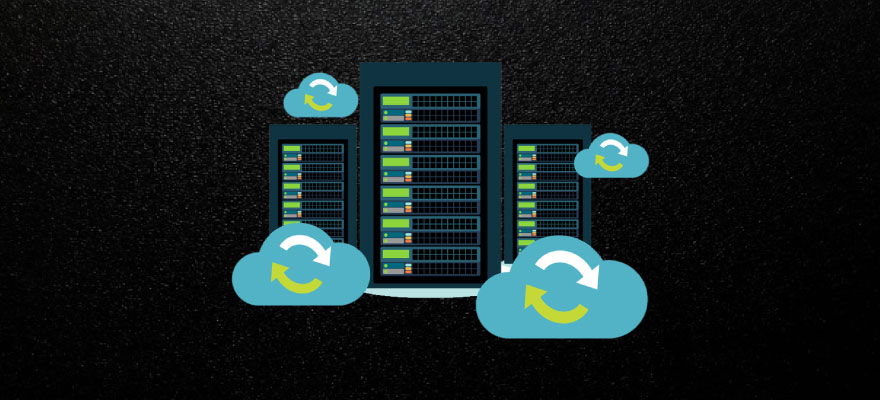Have you ever thought of migrating your IT infrastructure to the cloud? Or do you even know what advantages the cloud can bring to your business? Many people would answer yes to these questions, but they still don’t know how to do it.
Migrating to a cloud computing infrastructure can bring numerous benefits to a company, if done right, in what comes to speed, cost and performance. But it will be necessary deep research and to find the correct approach.
Yes, it can be a difficult process. And that’s why we are writing this article. We will list the main steps for migrating from a traditional IT structure to the cloud.
First of all, the steps might be something like this:
- Determine why you want to move to the cloud
- SWOT analysis
- Assess your environment
- Selecting the right cloud partner
- Select the cloud environment needed
- Determine the architecture
- Select the right cloud provider (not to be mistaken with partner)
- Plan the migration
- Execute (read BACKUP first)
- Monitor
Determine why you are moving to the cloud
It may seem a little obvious, but this is a very important step. The cloud structure may not be the best option to all kinds of businesses. That’s why you should evaluate the situation of your company and set some reasons why you are moving to a cloud computing infrastructure.
SWOT Analysis
A cloud structure requires some specific knowledge that can be a big obstacle to some businesses. Also, it can increase some costs, while it reduces others and saves more time. Not to mention the global trend of cloud computing.
But the only way to measure this is through analysis. Swot analysis is one of the easiest ones.
SWOT stands for Strengths, Weaknesses, Opportunities, and Threats. Analysing these parameters will give you a complete panorama of everything you can improve.
Assess your environment
Assessing your current IT infrastructure is also a necessary step. Once you will get to know the resources, what applications you should use, costs and all the aspects over your IT infrastructure.
Below you will see some key aspects to evaluate:
- Which applications you should migrate
As we said before. The cloud structure brings many benefits, but it may not be an interesting option to all kinds of business. There may be cases where some applications would do best if they remained on your servers rather than in the cloud. For example, a performance-intensive app may not be the best for migrating to the cloud.
Given that, it is a good idea to detect and identify the apps that can be moved to the cloud.
- Costs and resources of your current infrastructure
After identifying all the apps you’re moving to the cloud, it is time to analyze them for:
- Infrastructure the apps use. That will include the amount of space and data generated, networking, etc.
- Money spent on servers and management
- Other costs involved
Making this analysis will help you see how to migrate the apps and optimize them for better performance.
Choosing the right cloud partner
If you already have enough knowledge or an IT team working with you, maybe you don’t have to follow this step. Otherwise you will have to choose a cloud partner to complete all the steps from the migration.
A good partner will be key to a successful cloud migration and to avoid big mistakes that can lead to failure.
Take a good look on the professional’s background and experience. Also, consider certifications and good feedbacks from clients. Here is some help about choosing IT professionals that work well with the cloud.
Choosing the best cloud environment
What is the best cloud environment for your scenario? What kind of resources will the apps you use need? Choosing the best cloud environment will help you achieve your goals.
In this step, give priority to your apps. Some applications may work better on certain environments.
Also mind the architecture of your cloud, considering storage, computing power, content delivery, etc.
Choosing the right architecture
Once in this step, it’s time to choose the right architecture. For this, take all the results from the analysis, set the applications you will migrate and determine all components you will need.
Don’t forget to consider storage needs, computer capacity, content delivery, and other aspects that will affect the architecture.
Pick the right cloud provider
What is the size of your company? What service can best answer your needs? LetsCloud can be the best choice, especially if you are a startup or freelancer professional.
With a pay-as-you-grow billing you will pay only for the resources you need. That can be a differential when it comes to low budget. Also, great support and structure are some of the pros from LetsCloud solutions.
Plan the migration
At this point you might have decided whether it is worth or not moving to a cloud infrastructure, which resources you will need and also the kind of cloud you will use. It’s time to plan your migration.
In this step, keep in mind the following:
- Order of migration of applications
- Minimal disruption time
- Deadlines of key metrics
- Changes to end-user processes resulting from the migration
Hands on
After evaluating and planning the migration, the last step is to execute the plan. At this step there are some very important things to keep in mind.
Don’t start migration without backing up your data and processes. When it comes to IT, backups are obligatory.
Also, make sure to deploy the cloud environment. That is, you will provision connections and test every component.
Next, migrate the data you have backed up. This can take some time, but don’t rush it.
Finally, test your cloud environment to see if everything is working well.
Monitoring
All you have to do now is to monitor the implementation. This will help detecting and fixing any issues you may have during the migration.
Cloud computing is far from being an extra. Actually, it brings numerous benefits to a company, making it easier to make business. Finally, it is never to late for migrating to a cloud infrastructure and boost your business.





